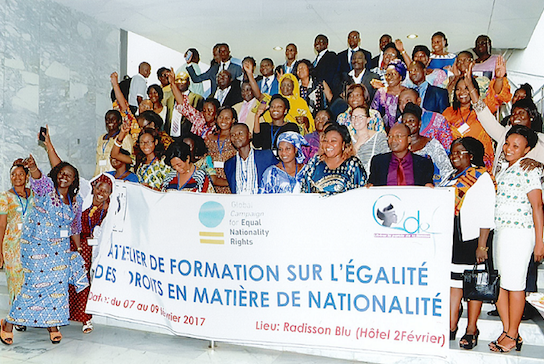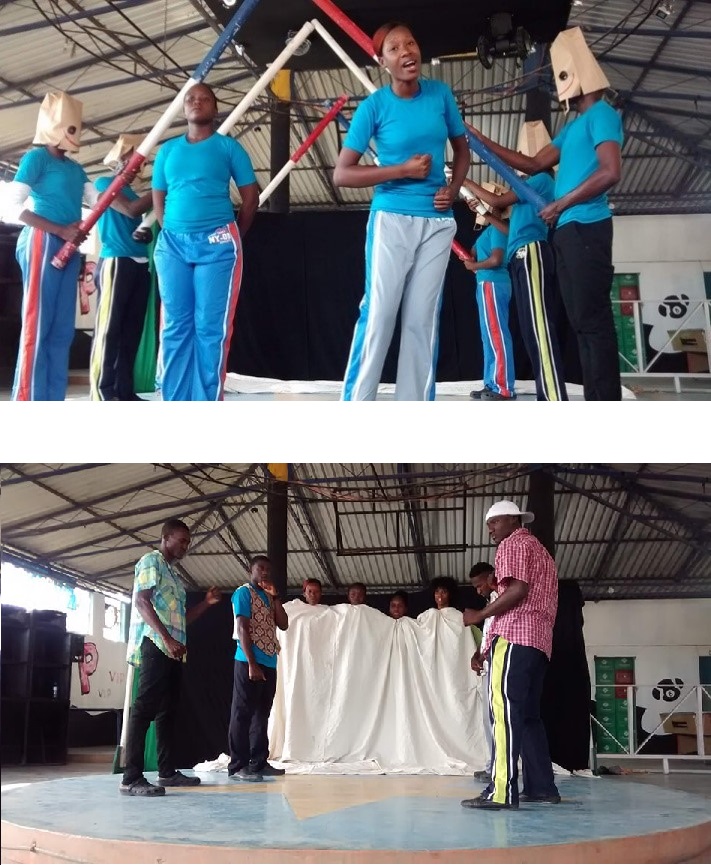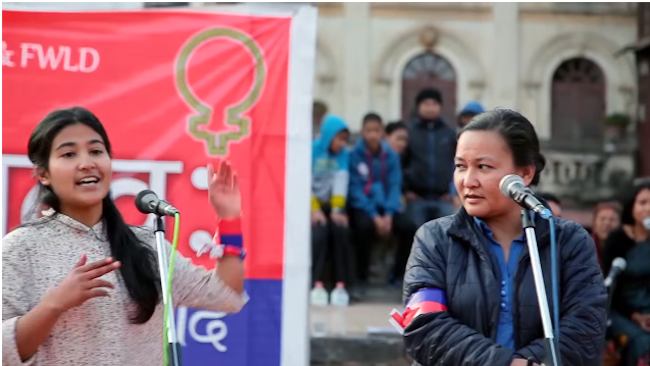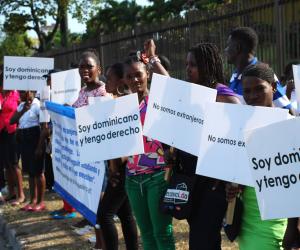Campaign, Act, Raise Awareness!
Protests for Nationality
A protest (or a demonstration) is when a group of people come together because they all believe that something must change, to make a bad situation better. Normally, protestors walk together, meeting either before or after they march, and hearing speakers talk about the issue. Protests are a powerful way to send a message to the government, the public, and sometimes even the world, that something is unfair and needs to be improved. Protests can get lots of attention in newspapers and online and are a great way to educate many people about an issue.


There have been many protests for nationality around the world. They can be different and very creative. These photos show young people protesting the 2013 court ruling in the Dominican Republic that declared thousands of people – just like Rosa and her family, who I met in my travels - should lose their Dominican nationality overnight. Their posters read ‘I am a Dominican and I have rights’, ‘We are not foreigners’ and ‘Soy dominicano, como tu – I am Dominican just like you’.
“Citizenship in the Name of the Mother” is an activist group set up in Nepal to protest law that prevents women from passing their nationality to their children, just like my sister Nikita and I. Our whole family have participated in these protests. We have held many different types of protests and events, like a human chain, plate and spoon protest and even a ‘sleep protest’ with around 1000 people lying down in front of a government building!
The group also created a petition and had people sign it, which was presented to government officials in Nepal, and to Nepali embassies in countries like India, Canada and America.

Campaigning and Writing to Politicians
Campaigning is different to protesting. It is when you try to achieve a goal by trying to convince people in power to make certain decisions. You can campaign for example, to prevent statelessness, or to help stateless children receive an education. Some groups campaign by writing to and speaking with politicians. A group called the European Network on Statelessness for example brought young people, from all around Europe, together in Brussels (Belgium) to train them on how to raise awareness on statelessness. They were called “Youth Ambassadors”. The Youth Ambassadors went to the European Parliament and presented a petition that had 30,000 signatures to Members of the European Parliament. The petition called for an end to childhood statelessness. Some of the Ambassadors even met Members of the European Parliament from their own countries. One of the important lessons they learned is that politicians are often happy and willing to listen to us and learn what they can do to help.

Another group, the Global Campaign for Equal Nationality Rights works so that women and men can have equal rights in relation to their nationality. The Campaign creates booklets and brochures to inform the public and governments about the impact of these laws on women, children and men. It holds workshops and meetings, and spreads the word that it is wrong to have nationality laws which treat women differently to men.

Theatre, Poetry and Art

We can also be more creative and make things more interesting. In fact, we learn about things all the time without even realising it. When we watch our favourite TV show, for example about a group of friends going on adventures and getting into all sorts of mischief, we may be learning lessons in friendship or teamwork or honesty. It is hard to believe that a few words written into a law can have such negative effects on people’s lives. And so, explaining things through art, poetry or plays are great ways to grab people’s attention, and spread awareness on an issue that may otherwise be difficult to discuss.
In the Dominican Republic, a street theatre project encouraged young Dominicans to explore the idea of belonging and to better understand and challenge the discrimination faced by Dominicans of Haitian descent.
12 young Dominicans – some of them stateless – designed two plays about statelessness and accessing basic rights, like going to school. They performed their plays to more than 5,000 people over three years and their success was shared on national media.

I have also done creative things to protest and raise awareness. Above is a photograph of me performing a poem about statelessness at a slam poetry event in Nepal on International Women’s Day. I was very nervous but I was determined to perform, and the feeling after was like I had all of this energy running through my body. It was great that my Mom (also in the picture) stood by me the whole time!

And here is a painting by 12-year-old Kavya. She was very upset when she saw the news about the way the Rohingya were being treated. How they were being chased out of their own country Myanmar. She was so upset that she knew she had to do something! So she painted this picture with a very simple but powerful message – “Accept the Rohingya”. The picture was shown in her school exhibition and was also used to illustrate an article online about the Rohingya. It is also on this site. So you see, Kavya, by turning her frustration into a creative and powerful piece of art, has done a lot to raise awareness about the treatment of the Rohingya!

